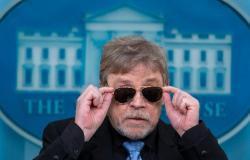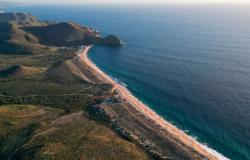Journalists documented the killings directly, the UN people in Rwanda had warned about the genocide in advance. Nevertheless, the international community stayed out. Only in 2000 did the UN Security Council explicitly take responsibility for the failed attempt to prevent the genocide, writes People and Defence.
Tucked away between Congo and Tanzania, little Rwanda was first colonized by Germany, then Belgium took over during the First World War. The population consists of three groups: the Hutu (about 85 percent), the Tutsi (about 14 percent) and the Twa (about 1 percent). The Tutsis were historically at the top of society, but all had the same language and faith, and there was a certain social mobility between the groups, writes The Guardian.
Revolution and guerilla warfare
During the colonial period, the Belgians closed to this mobility. With this, they had built up the level of tension between Hutu and Tutsi. In 1959, revolution broke out, in which the Hutu overthrew the Tutsi monarchy. Close to 20,000 Tutsis were killed and tens of thousands driven to flight. Some of these exiled Tutsis started the Rwanda Patriotic Front (RPF) movement.
The article continues below the adThe article continues below the ad
Hutus ruled Rwanda for over three decades. The Tutsis were blamed for the vast majority and lost a number of positions at the top of society. In 1990, the RPF began attacking Habyarimana’s government forces, and a guerrilla war broke out. A failing economy and increased competition for land also created increased tension. A ceasefire with the RPF was signed in 1993, and the UN sent in forces.
The article continues below the adThe article continues below the ad
A mass grave in the village of Kimbumbve in southern Rwanda. There are still many such graves. Photo: Heiko Junge / NTB
– Cockroaches
Extremists, however, gained increasing support among ordinary Hutus. Radio became an important weapon for both sides, particularly through the Hutu station RTLM, described by Al Jazeera as “music you could kill for”.
All these events led up to that fateful evening in April 1994. In the days and weeks before, RTLM regularly described Tutsis as “cockroaches” and “snakes”.
Exactly who shot down the plane is still unclear. The RPF and the Hutu extremists blamed each other. What is certain is that both Habyarimana and the president of Burundi were on board and were killed. And that the genocide was already under way the next day.
The article continues below the ad

Court drawing by Sadi Bugingo. In 2015, he was sentenced to 21 years in prison by the Borgarting Court of Appeal for complicity in the murder of over 2,000 people during the genocide in Rwanda. Photo: Marco Vaglieri / NTB
– I still remember that night. I had been visiting some friends and it was completely quiet in Kigali. I drove as fast as I could. I was terrified of what was going to happen. Because you never find a city like that completely dead, aid worker Benedicte Giæver told NRK in 2019.
Thoroughly organized
– The genocide was thoroughly organized. Lists of the government’s opponents were distributed to militias who went to kill them and their families, writes the BBC.
ID cards contained information about ethnicity and could easily be used to identify Tutsis. The names of prominent Tutsis were read out on the radio. Moderate Hutus and Twa were also targeted in the massacres. People were killed when they took refuge in churches, neighbors attacked neighbors, people were forced to attack others. Hundreds of thousands of women were raped, and the Hutu extremists actively ensured that many of them became infected with HIV.
The article continues below the adThe article continues below the ad
– One of the things that was most shocking was how massive the scale was. And then it was so raw. Small children came to the refugee camps with limbs cut off with machetes, said Aftenposten’s photographer Jan Tomas Espedal in 2019.

Mathias Njangwe (left) was convicted of participation in the genocide in 1994. Antoine Maniraho (th) lost his entire family. Sengabo Innocent is Hutu, but did not participate in the genocide. Together they participated in the reconciliation process that characterized Rwanda for many years. Photo: Heiko Junge / NTB
The UN forces withdrew
In the middle of the massacres, Belgian forces withdrew from the country, and then most of the UN forces followed. Those who remained were thus never given a mandate to stop the genocide. France chose to intervene on its own, but mainly to evacuate its own citizens.
The RPF went on the offensive again, and in the chaos succeeded in capturing the capital, Kigali, in July. Fearing reprisals, two million Hutus fled to the Congo, which created a new refugee crisis. The international community again received a lot of criticism, this time because much of the aid ended up in the hands of the militias.
– When NTB visited the border town of Goma in July, where 50,000 people died of cholera in a few weeks, it turned out that the Norwegian Red Cross was among those who had prioritized the killers by placing a surgical unit in a camp for Hutu soldiers , wrote NTB’s Nils-Inge Kruhaug.
The article continues below the ad
People’s Courts
The remnants of Hutu militias in Congo also strongly contributed to civil war breaking out there throughout the 1990s.
The number of people killed during the genocide is difficult to determine. Rwanda’s constitution states that more than a million were killed, while international figures are usually around 800,000.
Only after the genocide did the world community begin to react – along with Rwanda’s new government, led by RPF leader Paul Kagame. Among other things, his government set up thousands of so-called people’s courts for local criminals. The focus was on reconciliation, with reduced sentences for those who confessed to their crimes. At the same time, these trials have been criticized as sham trials.
The article continues below the ad

A dying child from Rwanda in a refugee camp in the Congo. Photo: Nils-Inge Kruhaug / NTB
Still finding suspects
The UN Special Tribunal for the Genocide (ICTR) was established in Arusha in Tanzania in 1994. 93 perpetrators, all Hutus, were convicted in this court. Around the West – also in Norway – the perpetrators of the genocide are constantly being arrested and brought to justice. However, Human Rights Watch writes that there is still much work to be done.
The article continues below the ad
In the decades since the genocide, Kagame has promoted a narrative that the divisions have been erased. The authorities no longer use the terms Hutu and Tutsi, and a number of terms related to ethnicity are prohibited. Rwanda today has a very young population, where many were born after the genocide – and where economic development and growth have led to much international praise for the highly authoritarian Kagame.








